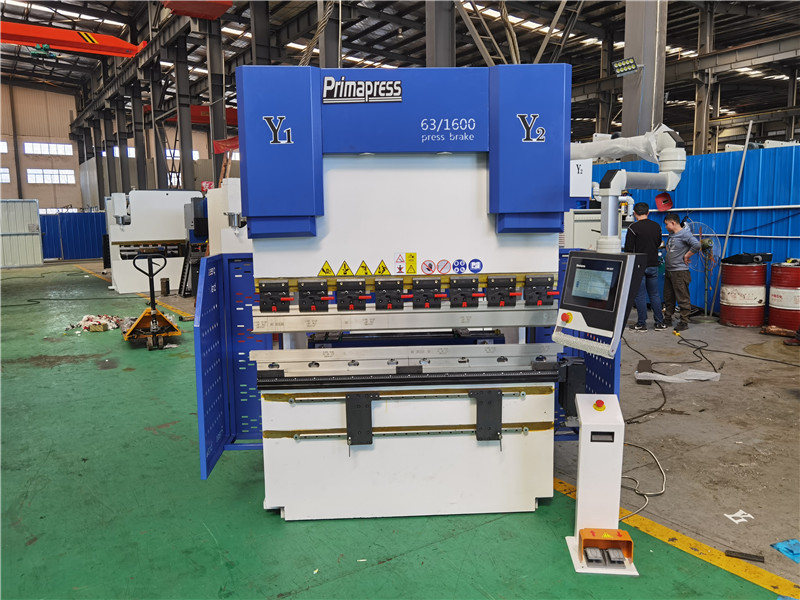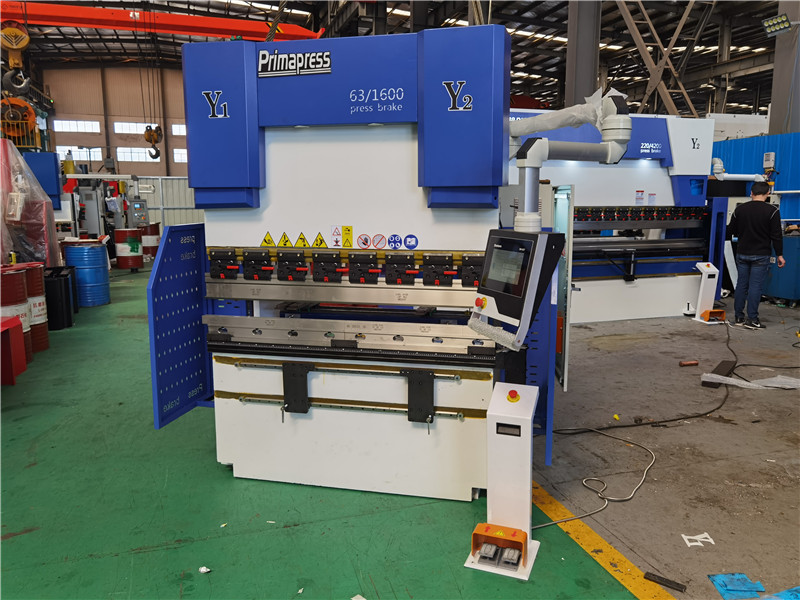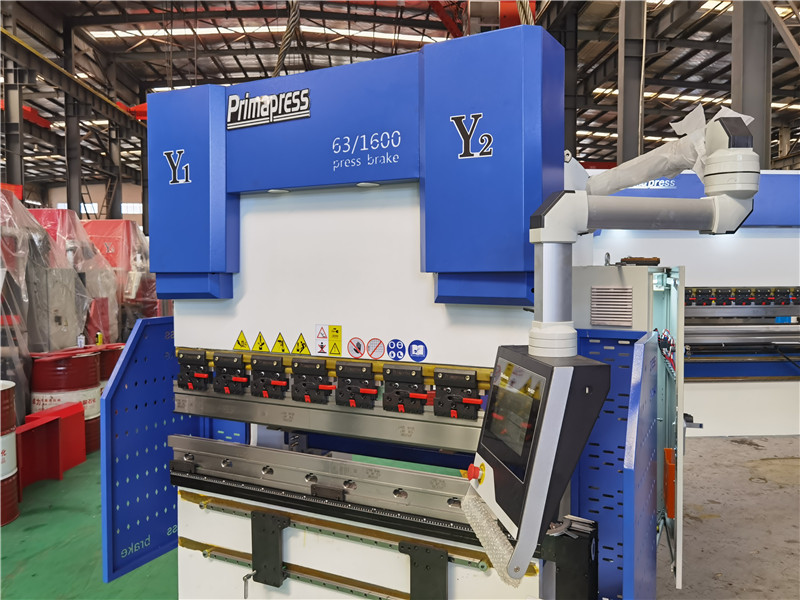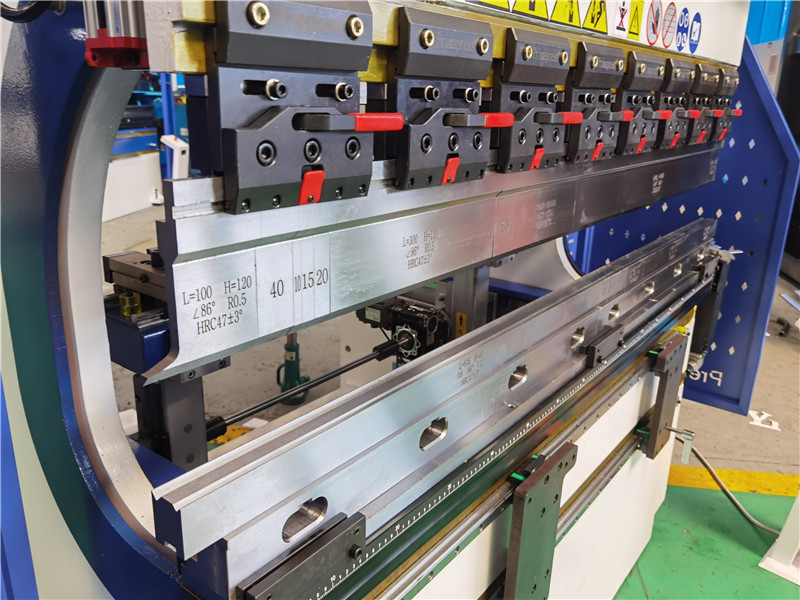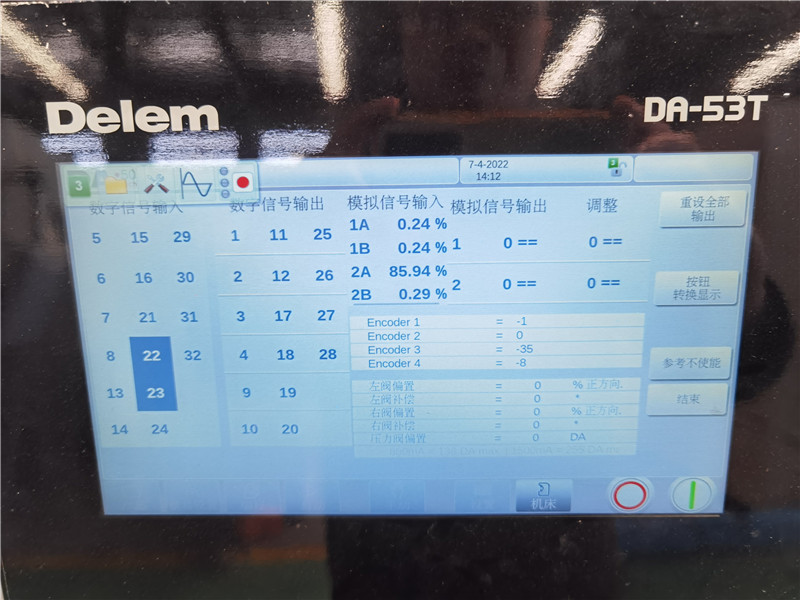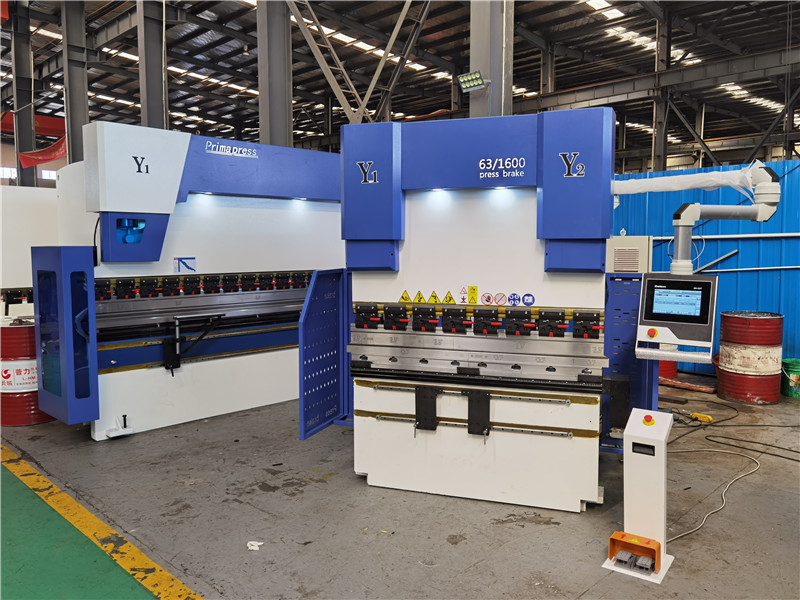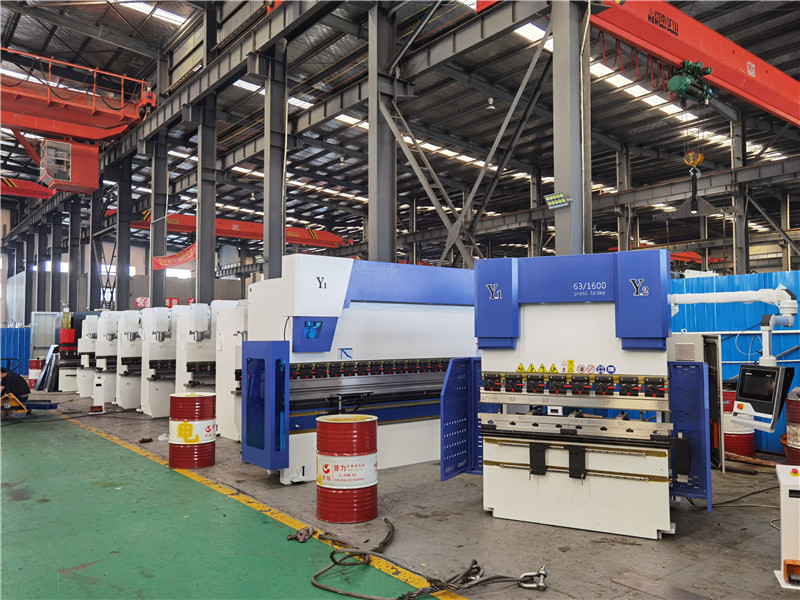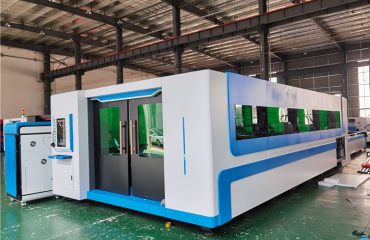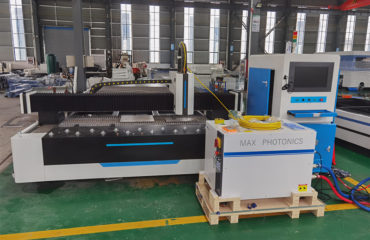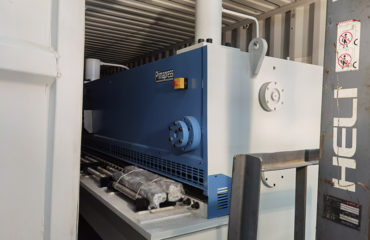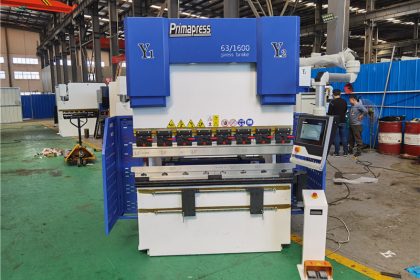
The knowledge and elements you need to know when purchasing a sheet metal CNC hydraulic press brake bending machine
Sheet metal CNC hydraulic press brake bending machine is an important equipment for bending and forming workpieces in the sheet metal industry
The metal sheet CNC hydraulic press brake bending machine is an important equipment for bending and forming workpieces in the sheet metal industry. Its function is to press the steel plate into various shapes according to the needs of the process. The frame is mainly composed of left and right columns, worktables and beams. The left and right oil cylinders are fixed on the columns. The slider is connected with the pistons of the oil cylinders and moves up and down along the guide rails fixed on the columns. The lower die is fixed on the workbench and the upper die is installed on the At the lower end of the slider, the hydraulic system provides power, and the electrical system gives instructions. Under the action of the oil cylinder, the slider drives the upper die down and the lower die is closed to realize the bending of the sheet. The left and right columns, the worktable and the slider (hereinafter referred to as the three major parts) are the key parts of the CNC hydraulic press brake bending machine for sheet metal. The sum of the weight of the three pieces accounts for 70% of the total weight of a CNC hydraulic press brake bending machine for sheet metal. 80%. Its strength and rigidity directly determine the running accuracy and service life of the machine tool, as well as the accuracy of the workpiece.
Structural design of sliding block and worktable of sheet metal CNC hydraulic press brake bending machine:
In order to meet the strength and rigidity of the slider, the larger the tonnage of the metal sheet CNC hydraulic press brake bending machine, the higher the slider height. For the same tonnage metal sheet CNC hydraulic press brake bending machine, the longer the slider, the higher the slider height. When the slider exceeds the transportation requirements, take separate or layered treatment to ensure that the weight and dimensions of each single piece are within the transportation requirements. The two ends are positioned and tightened by the splint and the pin shaft, and the flange screw is pre-tightened in the middle to make the upper and lower bodies become a rigid body. The key is the selection of the upper and lower parting surfaces. The parting surface is selected on the section of the main body of the slider that is not elongated and deformed along the length direction. At this time, the pins and screws are only subjected to tensile force, the force is reasonable, and the connection is reliable. When the parting surface is down or up, the strength of the connector should be higher.
The thickness of the slider is layered up and down, and the slider of the CNC hydraulic press brake bending machine for large tonnage and long specifications is still overweight after the upper and lower parts are separated. It needs to be separated and then layered in the thickness direction to achieve the purpose of convenient transportation and installation. The slider consists of three parts: the front part of the lower body of the slider, the rear part of the lower part of the slider and the upper part of the slider. , through multi-row key positioning, flange screw pre-tightening connection, so that the three achieve a rigid body.
There are two types of workbench structures for sheet metal CNC hydraulic press brake bending machines. The upper and lower parts are connected. This structure is mostly used in models with long workbenches or gantry columns. It consists of the upper body of the workbench and the lower body of the workbench. Both ends of the parting surface are positioned and tightened by splint pins, and the middle is fastened by locking screws. Front and rear split connection method, this structure is mostly used in C-type column models. It consists of the front body of the worktable and the rear body of the worktable. The semicircular block connecting the worktable and the column is used for positioning. solid. The front and rear split type has no parting surface problem, and the rigidity is better than the upper and lower split type, but the width of the worktable is limited by the delivery and transportation requirements.
When purchasing CNC metal sheet CNC hydraulic press brake bending machine, these factors cannot be ignored
The purchase of CNC sheet metal CNC hydraulic press brake bending machine is the first important thing to consider is the parts you want to produce, the main point is to buy a machine that can complete the processing task. Carefully consider material grades as well as machined thicknesses and lengths. If most of the work is mild steel with a thickness of 16 and a length of 10 feet, then the free bending force does not have to be greater than 50 tons. However, if you are doing a lot of bottomed die forming, maybe a 150-ton machine should be considered. Assuming a 1/4 inch thick material, 165 tons for a 10-foot free bend and at least 600 tons for a bottomed die bend (corrected bend). If the majority of workpieces are 5 feet or less, the tonnage is almost halved, greatly reducing the acquisition cost. Part length is very important in sizing new machines.
The deflection of CNC metal sheet CNC hydraulic press brake bending machine:
Under the same load, the deflection of the table and slider of the 10-foot machine is 4 times that of the 5-foot machine. That said, shorter machines require less shim adjustment to produce acceptable parts. Reduced shim adjustment in turn reduces setup time. Material grade is also a key factor. Compared to mild steel, stainless steel typically requires around 50% more load, while most grades of soft aluminium require around 50% less. You can always get a tonnage table from the sheet metal CNC hydraulic press brake manufacturer that shows an estimate of the tonnage required per foot of length for different thicknesses and materials.
Operating procedures for CNC metal sheet CNC hydraulic press brake bending machine:
- Strictly abide by the safety operation procedures and wear labor protection equipment as required.
- Before starting, carefully check whether the motor, switch, circuit and grounding are normal and firm, and check that the operating parts and buttons of the equipment are stuck in the correct position.
- Check the coincidence and firmness of the upper and lower dies; check whether each positioning device meets the requirements of being processed.
- When the upper slide plate and each positioning axis are not at the origin, run the back-to-origin program.
- After the equipment is started, it should run idly for 1-2 minutes, and the upper slide plate will move 2-3 times in full stroke. If there is any abnormal sound or fault, it should be stopped immediately, and the fault should be eliminated, and then it can work only after everything is normal.
- The work should be under the unified command of one person, so that the operator closely cooperates with the feeding and suppressing personnel to ensure that the cooperating personnel are all in a safe position to send the bending signal.
- The sheet must be compacted when bending to prevent the sheet from lifting and hurting people during bending.
